
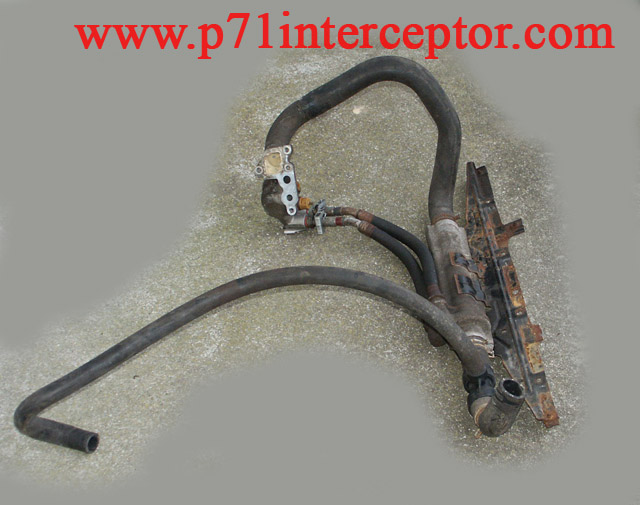
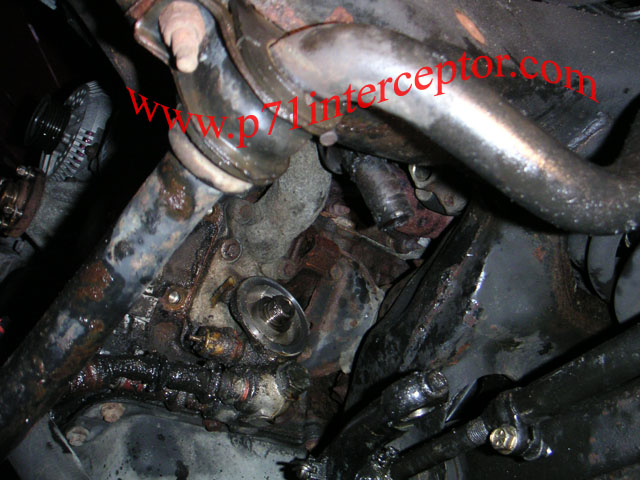
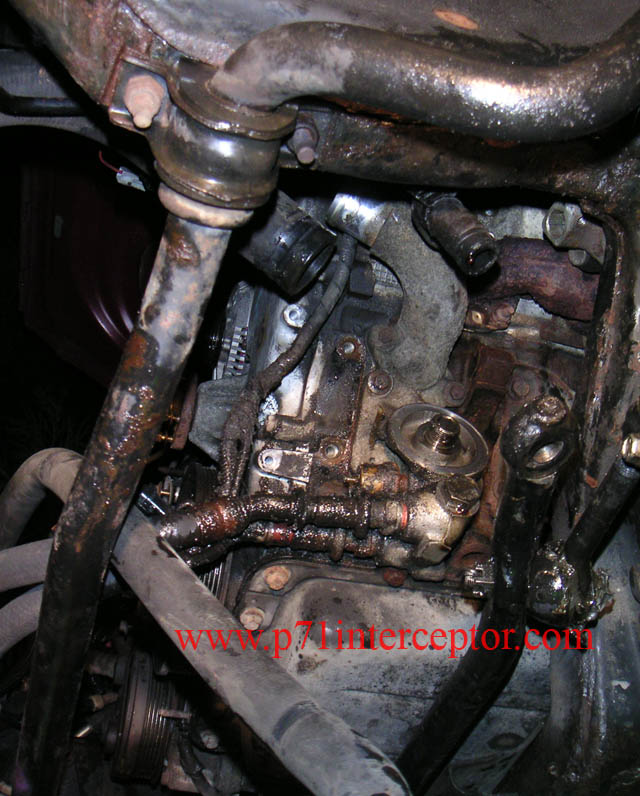
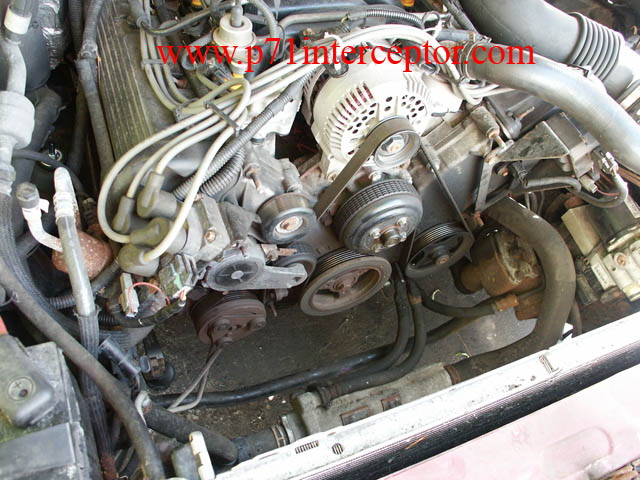

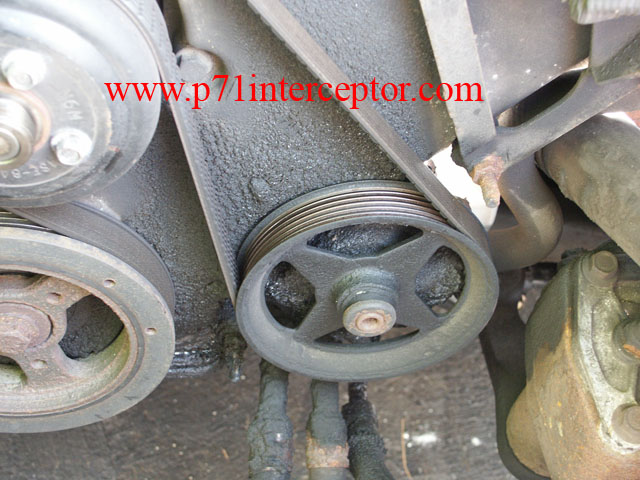
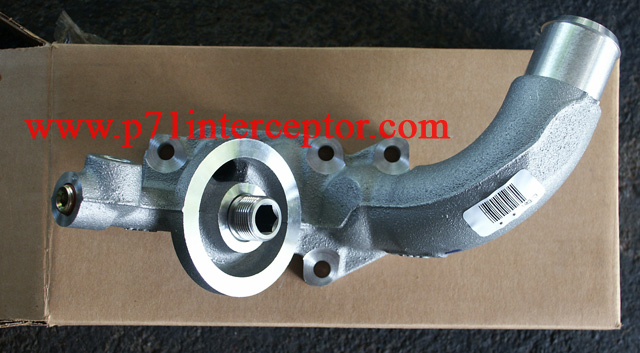
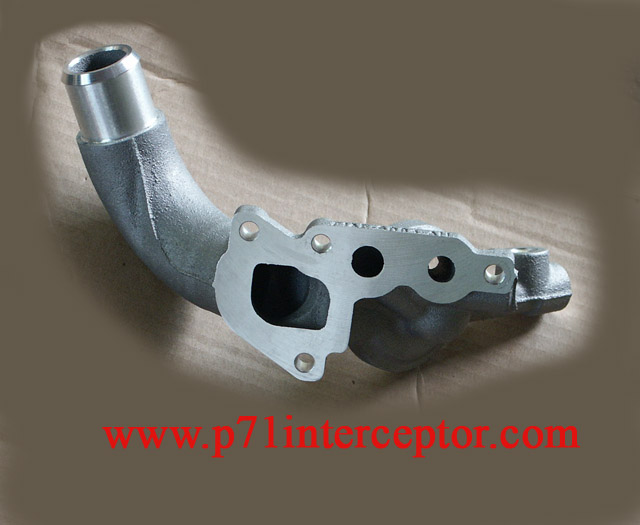
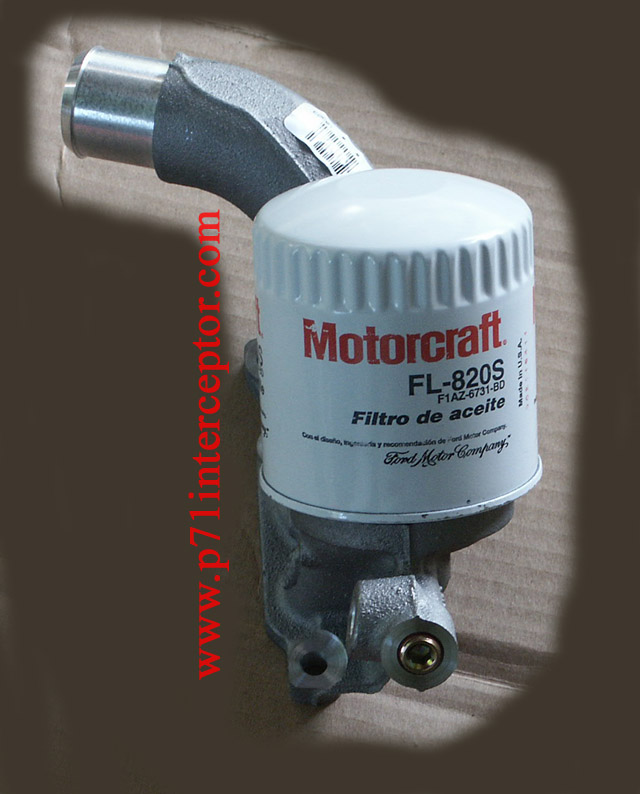

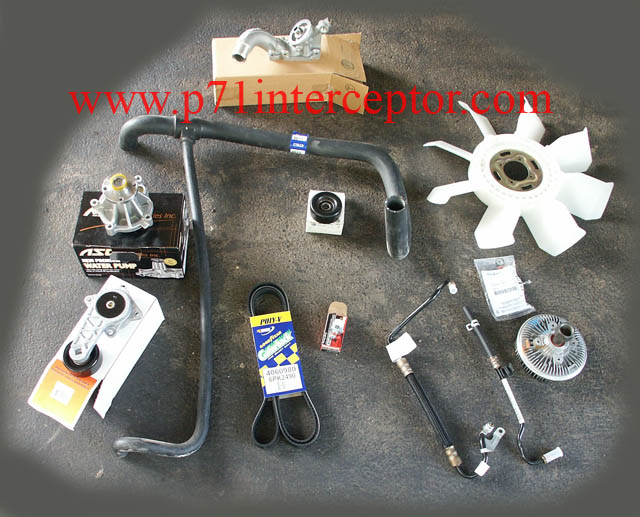
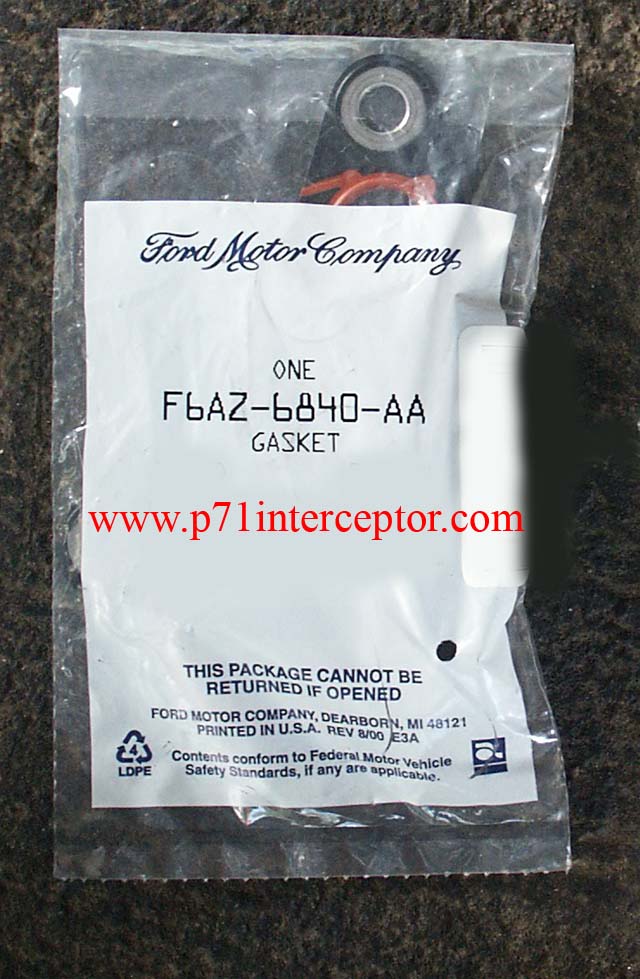
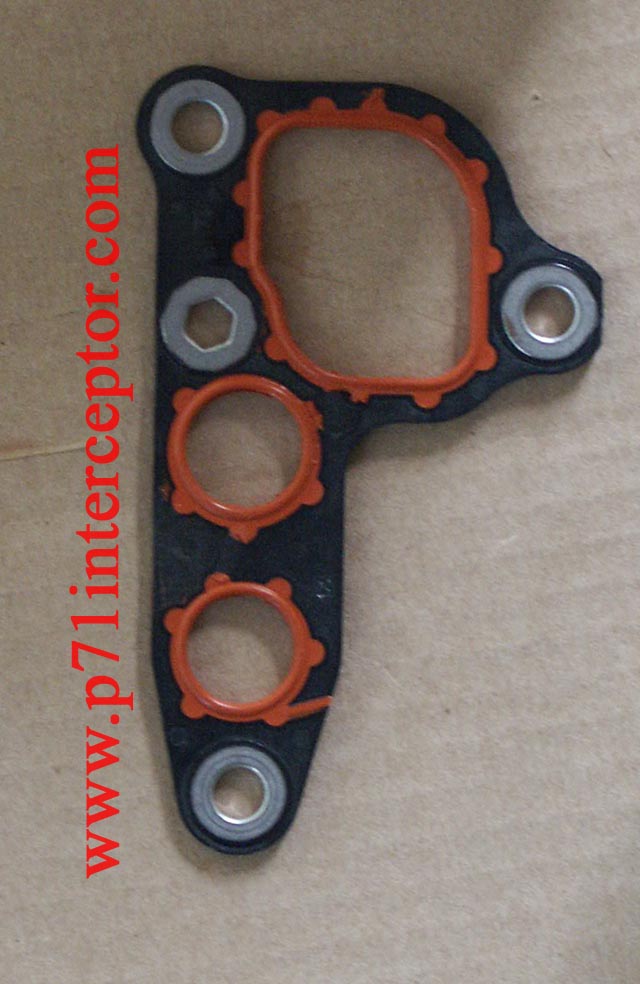

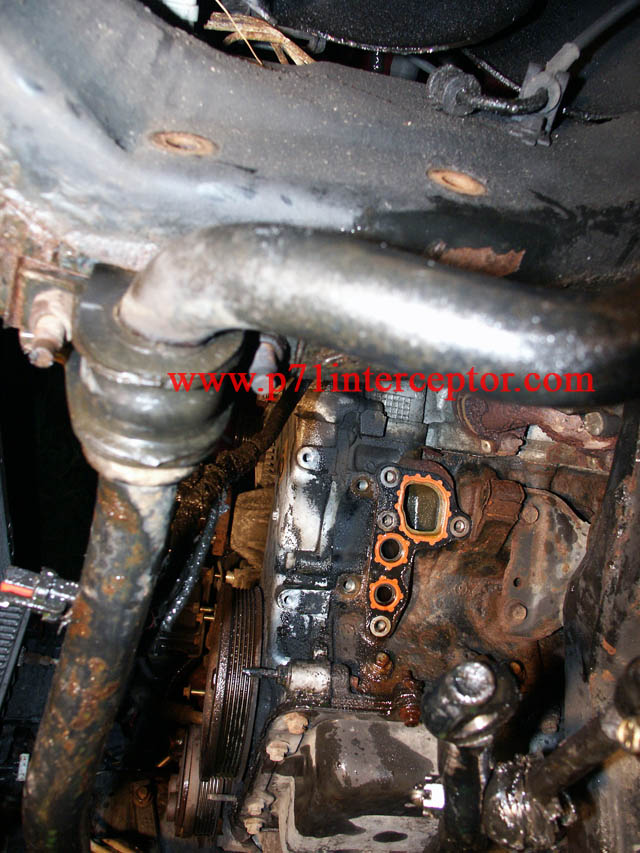
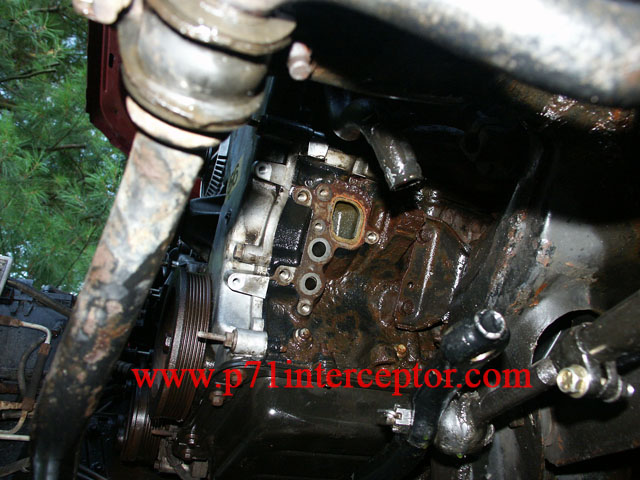

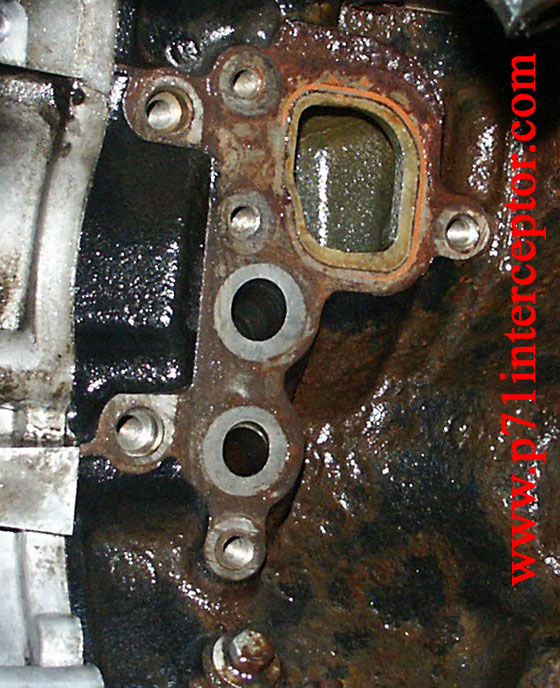
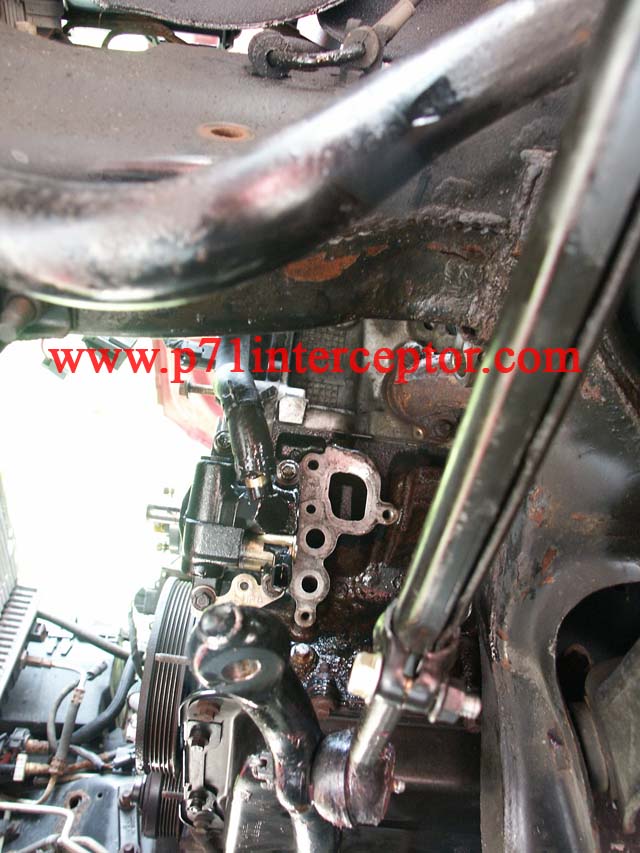
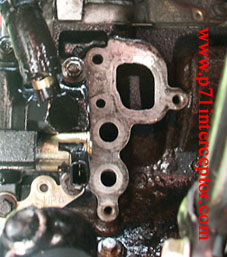

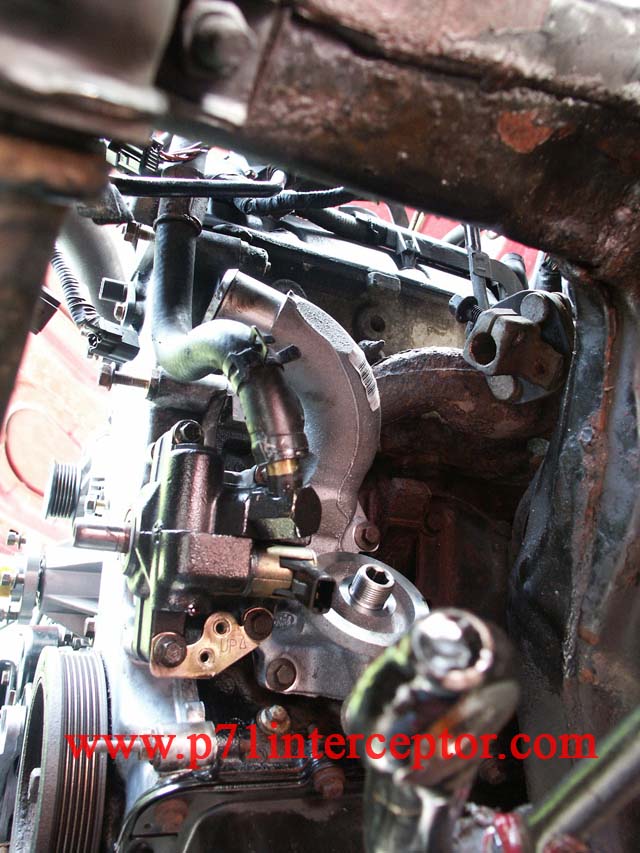
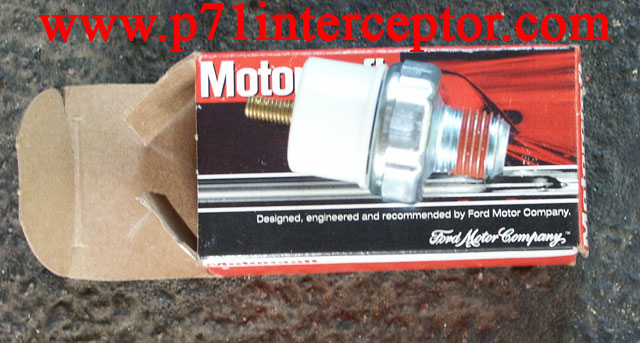



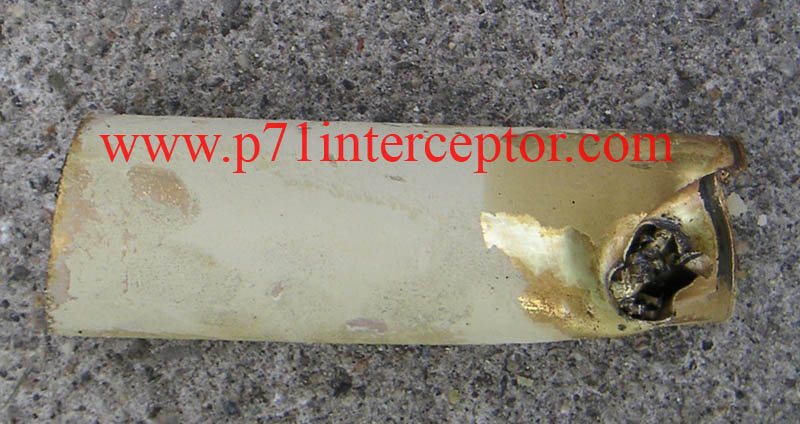
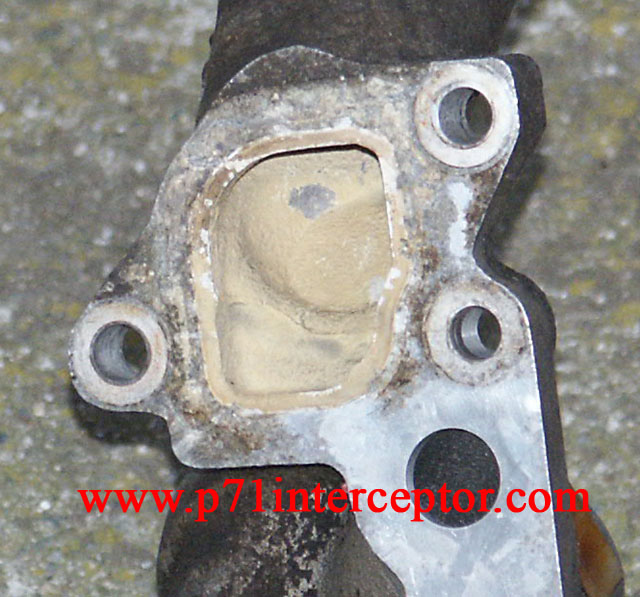
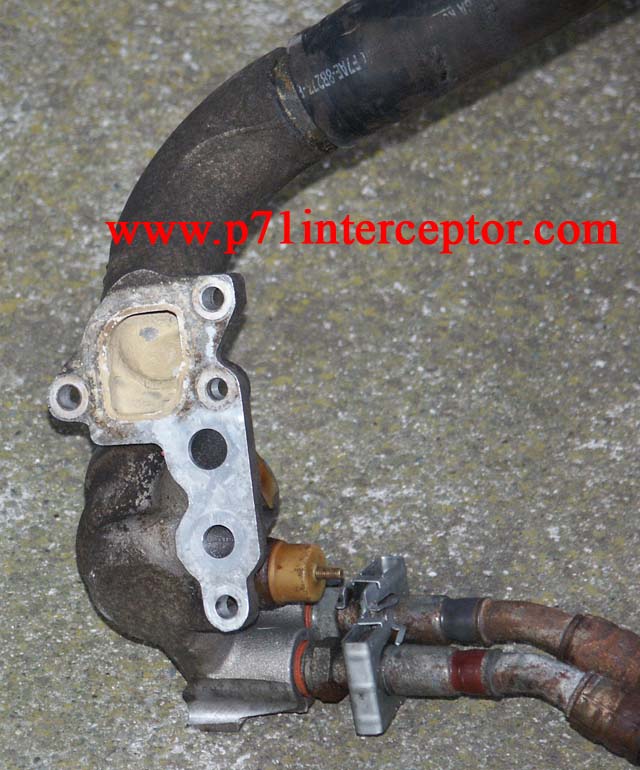

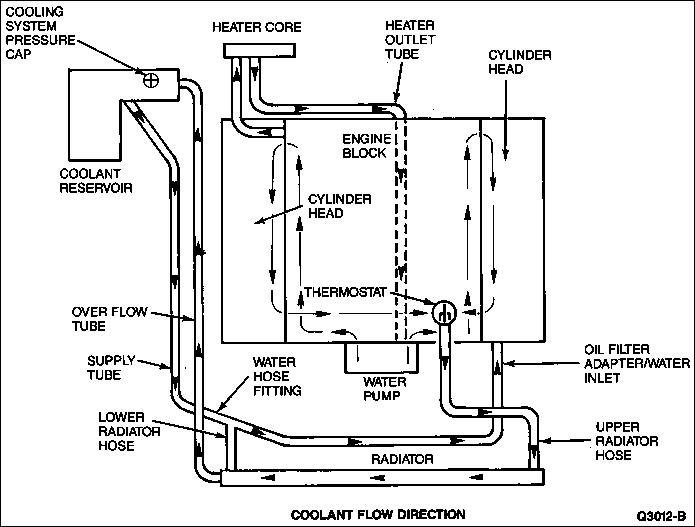
| Part Number |
Comments |
Suggested Retail (August 2005) |
| 3W7Z-6A715-AA | Police Oil Cooler Hose Assembly Later style. Bolts onto oil filter adapter. No spring locks. This part is used on 2003+ production vehicles. These hoses are slightly longer in length than the 1998-2002 service part that they supercede. |
$122.05 |
| Oil cooler hose seals not serviced seperatetly from the hose assembly | ||
| F8AZ-6881-AA | Police Oil Filter Adapter With Oil Cooler |
$268.98 |
| F6AZ-6840-BA | Police Oil Filter Adapter ->
Engine Block Gasket With Oil Cooler (Blue colored gasket) (Ford service parts literature indicates that the blue gasket is factory installed in police cruisers. But many police interceptors have the orange gasket factory installed instead.) |
$7.91 |
| N806155-S2 | Police Oil Filter Adapter ->
Oil Cooler Hose Bolt M6 x 1.0 x 27.5 This bolt retains the oil cooler hoses into the filter adpater. |
$9.08 |
| 3W7Z-6A642-AA | Police Oil Cooler This is the aluminum oil to coolant heat exchanger that interfaces with the lower radiator hose and the cooler lines. It is physically located below the radiator. |
$393.57 |
| F5AZ-6B634-A | Police Oil Cooler -> Radiator
Core Support Bracket 1995-2002 (Not compatible with 2003+ crown vics) |
$22.32 |
| Oil cooler hoses for 1995-1997
crown vics no longer serviced. Must upgrade to later style F8AZ-6881-AA
filter adapter, 3W7Z-6A715-AA hoses, and N806155-S2 bolt. |
||
| F1AZ-6881-BA | Civilian Oil Filter Adapter Without Oil Cooler |
$119.71 |
| F6AZ-6840-AA | Civilian Oil Filter Adapter
-> Engine Block Gasket Without Oil Cooler (Orange colored gasket) (Ford service parts literature indicates that the orange gasket is only for civilian cars. But many police interceptors have the orange gasket factory installed too.) |
$11.52 |
| F1AZ-6731-BD FL820-S |
Oil Filter Police and Civilian 22mm Fitting (Also used in numerous other ford vehicles besides the crown vic) |
$7.24 |
| N806156-S437 | Oil Filter Adapter->Engine
Block Bolt These are the bolts which retain the oil filter adapter to the engine block M8 x 1.25 x 41.0 Supercedes N806156-S2 and N806156-S309 |
$5.74 |
| E9SZ-9278-A SW-2220 |
Oil Pressure Sender Police and Civilian Older style electrical connector for 1999 and prior vehicles |
$18.60 |
| 1U5Z-9278-DA SW-5696 |
Oil Pressure Sender Police and Civilian Newer style electrical connector for 2000 and later vehicles |
$11.00 |
| F75Z-6730-BA |
Oil Pan Drain Plug The threads sometimes "strip out" when you remove the plug from the oil pan Having weak threads on the drain plug and strong threads on the oil pan is desirable since the drain plug is very easy to replace in relation to the oil pan itself |
$5.73 |